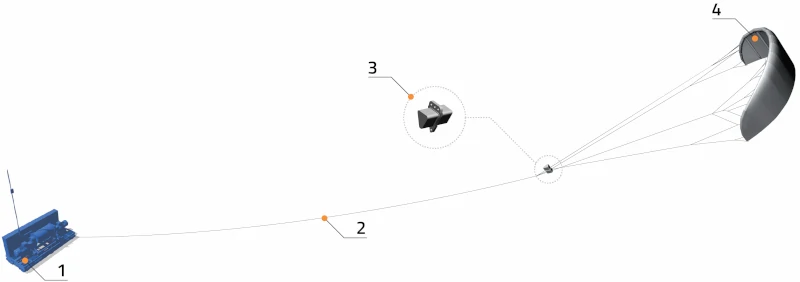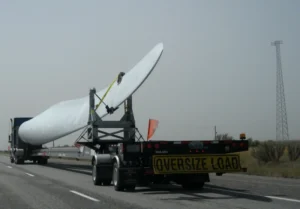The Potential of Airborne Wind Technology with Kites
Imagine tapping into the power of high-altitude winds using kites! That’s the exciting premise of Airborne Wind Energy technology. Designed to take advantage of the stronger, more consistent winds existing above the earth’s surface, this tech uses aerial kites connected by a cord to a ground-based electric generator. As the wind propels the kite, the force is transferred down via the cable, turning it into usable electricity. A truly innovative and eco-friendly solution!

What are the advantages of using airborne wind technology with kites for renewable energy production?
Imagine a wind power plant that leverages kites to tap on the robust winds at higher altitudes. This evolves contemporary wind energy generation approaches with distinctive benefits.
- 1. Harnessing more potent and enduring winds: By soaring to heights beyond the reach of conventional wind turbines, these aerial kites can bask in the power of more potent and enduring winds. Essentially, these wind catchers generate copious amounts of energy than their land-anchored counterparts.
- 2. Negligible disruption to the landscape: Contrary to the conventional towering structures, the aerial kites are a visual delight, causing minimal disruption to the locale’s aesthetics. Their non-intrusive nature makes them more palatable for the local communities and regulatory authorities.
- 3. Pliability and portability: The aerial kites are mobile champs. They can be deployed conveniently at diverse geographical junctions, harnessing wind resources at sites that are inaccessible or unsuitable for traditional wind turbines. What’s more, they can be dismantled and relocated with ease.
- 4. Projected cost reduction: While aerial kite technology is in its nascent stages, it promises to lower the expenses tied to energy production compared to traditional wind turbines. The lack of hard-to-build structures, combined with the usage of lightweight materials, contributes to reduction in installation and maintenance expenses.
- 5. Scope for heightened power generation: Thanks to their ability to scale to lofty heights, the aerial kites are capable of yielding more energy than their land-based alternatives. This potential of escalated energy production aligns perfectly with the ever-surging demand for renewable energy.
What is the current status of testing and development of airborne wind technology with kites?
Pioneering the next evolution in wind technologies, companies and influential research bodies are rigorously testing the feasibility of using large, autonomous kites to harness wind energy. There’s a compelling reason for this nascent focus: tapping into the consistent, robust winds found at higher altitudes could prove revolutionary. RWE, a renowned energy firm, has partnered with Kitepower and the Mayo County Council in a groundbreaking project that explores this concept, pushing the envelope by flying wind kites up to 500 high.
Testing ground for this forward-thinking project is Bangor Erris, Ireland, where the 100 kW Kitepower Falcon kite, an integral component of these experiments, flies. With a robust Dyneema string tethering it to a grounded station – that incidentally houses the electric generator – this kite’s optimal functionality is during the Reel Out phase. It dances elegantly with the crosswind, tracing a figure-of-eight flight pattern, drawing immense tensile strength from the cord that converts into electricity.
Still, it’s worth cautioning that this technology is rather experimental and somewhat in its infancy. Before these wind kites can move up to usher in a new era in commercial wind energy, many obstacles must be circumnavigated. Primary amongst these is the substantial financial costs involved in designing, manufacturing, and installing these intricate systems. Nevertheless, the long-term objective is to make these kites far more efficient and reliable to guarantee a worthwhile return on investment.
What financial investments or incentives are needed?
Breaking into the market with new airborne wind technologies that use kites is a significant financial undertaking. The experimental nature of this technology demands intensive research, testing, and refinement. Financial investment is imperative to design and manufacture the kites and associated equipment and optimize the dependability and performance of these systems.
To make this technology more appealing, financial incentives like government subsidies, tax breaks, or preferential pricing for renewable energy are necessary. Such measures can diminish financial uncertainties and stimulate firms to devote resources to the production and deployment of airborne wind energy systems.
In addition, a well-defined and clear regulatory framework is key for the development of kite-based airborne wind technology. The government’s role is to adapt its rules and regulations to enable the construction and operation of these facilities while maintaining strict safety and environmental precautions. A conducive and consistent regulatory atmosphere can encourage investment and accelerate the commercialization of this technology.
To conclude, the combination of companies, research institutions, and government agencies is crucial in propelling the commercialization of kite-based airborne wind technology. By sharing knowledge, resources, and previous experiences, the inception and application of this technology can be speeded up, reducing costs and enhancing efficiency. This cooperation also paves the way for strategic partnerships and spread financial risks, making the investment in tech commercialization more attractive.

